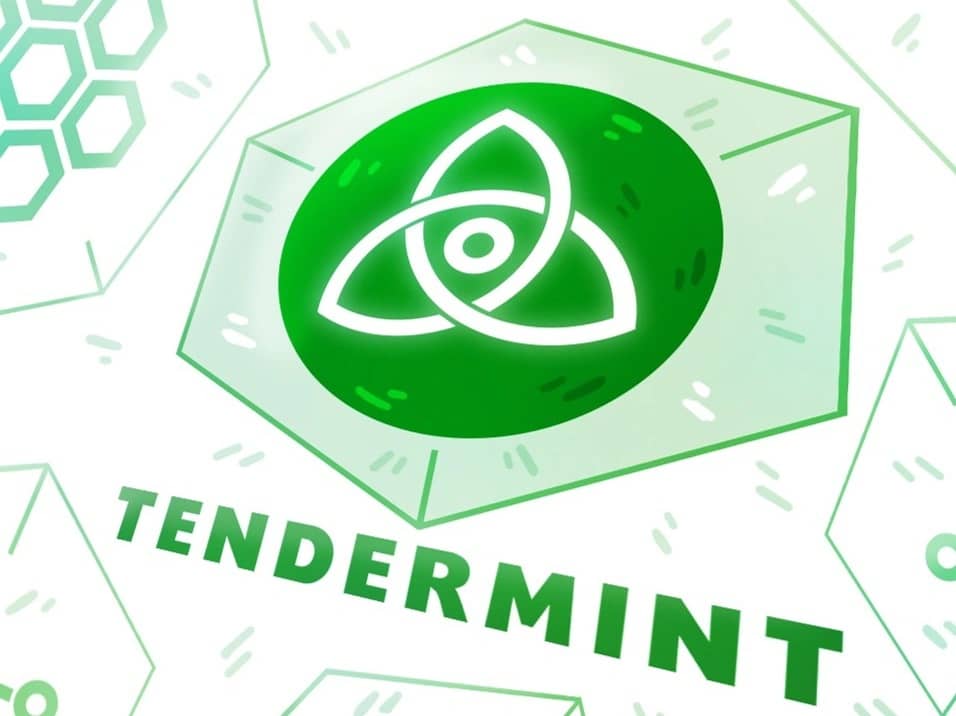Tendermint
**텐더민트(Tendermint)**는 애플리케이션이 서로 다른 기기에서 안전하고 일관되게 실행될 수 있도록 하는 비잔틴 장애 허용(BFT) 합의 메커니즘입니다[1].
기원
텐더민트는 제이 권(Jae Kwon)에 의해 설립되었습니다. 그는 2014년에 프로젝트 작업을 시작하여 텐더민트 합의 알고리즘 개념을 소개했습니다. 이단 부흐만(Ethan Buchman)은 암호화폐 연구 그룹 및 암호경제학 컨퍼런스에서 두 사람이 만난 후 2015년에 권과 공동 창립자로 합류했습니다. 텐더민트는 오픈소스 인터체인 네트워크인 코스모스(Cosmos) 생태계, 즉 서로 다른 블록체인(존이라고 함)이 통신하고 데이터를 교환할 수 있도록 하는 암호화폐 애플리케이션을 개발했으며, 모두 아톰(Atom) 토큰으로 구동되는 코스모스 허브에 연결되어 있습니다[5][16].
2016년, 제이 권(Jae Kwon)과 이단 부흐만(Ethan Buchman)은 코스모스(Cosmos) 백서인 '코스모스: 분산 원장 네트워크'를 발표했습니다. 같은 해 코스모스(Cosmos)는 상하이 국제 블록체인 위크에서 '가장 혁신적인 프로젝트' 상을 수상했고, 텐더민트는 오하이오주 클리블랜드에 있는 록 앤 롤 명예의 전당을 위한 최초의 BFT 블록체인 투표 시스템 운영 계약을 체결했습니다[6].
2016년 후반, 코스모스(Cosmos) 개발을 지원하기 위해 인터체인 재단(ICF)이 설립되었고, 텐더민트는 코스모스(Cosmos) 구축을 담당했습니다. 2017년 ICF는 30분 만에 코스모스(Cosmos)를 위해 1,680만 달러를 모금하여 역사상 가장 성공적인 블록체인 기반 자금 조달 행사 중 하나가 되었습니다[5].
개요
텐더민트 소프트웨어의 첫 번째 공식 출시는 2015년이었습니다. 이 프로젝트는 기존의 작업 증명(PoW) 및 지분 증명(PoS) 메커니즘의 일부 한계를 해결하고 블록체인을 포함한 다양한 분산 애플리케이션에 대한 더 빠르고 안전한 합의를 가능하게 하는 비잔틴 장애 허용(BFT) 합의 알고리즘을 제공하는 것을 목표로 했습니다. 제이 권(Jae Kwon)은 2020년에 이더리움(Ethereum)의 경쟁자인 Gno.land에 집중하기 위해 회사 CEO직에서 물러났습니다.
텐더민트는 코스모스(Cosmos)의 시작부터 성장을 지원했으며 2021년에 인터블록체인 통신(IBC) 프로토콜을 출시했습니다. 10개월도 채 되지 않아 38개의 별도 블록체인이 블록체인 상호 연결을 위해 코스모스(Cosmos) 방식을 채택하여 매월 920만 건이 넘는 IBC 트랜잭션을 발생시켰습니다[11].
2022년 2월, 텐더민트는 Ignite로 브랜드를 변경했습니다. 텐더민트는 또한 모든 코스모스(Cosmos) 마케팅 및 커뮤니티 이니셔티브와 채널을 ICF로 이전할 것이라고 발표했습니다. 2022년 2월 23일, Ignite 공식 웹사이트에 다음과 같이 발표되었습니다.
오늘부터 코스모스(Cosmos) 생태계의 설립 팀이자 Web 3을 위한 혁신적인 도구의 선도적인 개발자인 All in Bits, Inc., DBA “Tendermint”는 “Ignite”라는 상표로 새로운 활력을 불어넣은 브랜드로 운영됩니다.
Ignite의 진화된 비전과 미션의 포용성과 다양성을 나타내는 새로운 법인명, 기업 브랜드, 브랜드 로고 및 브랜드 정체성이 개발되었습니다. Ignite의 CEO인 Peng Zhong은 다음과 같이 말했습니다.
세계는 Web 3 분야의 가속 성장이 결국 일상생활에서 분산 서비스의 대량 채택으로 이어질 변곡점에 와 있습니다. 우리는 더 많은 사람들과 조직을 이 세계로 끌어들이기 위해 초점을 확장할 때라고 생각합니다. 우리가 개발하고 있는 것은 개인과 조직이 혁신적인 글로벌 커뮤니티에 참여하고 구축할 수 있도록 하는 데 필요한 도구입니다. 우리의 새로운 브랜드는 모든 사람을 분산 및 상호 운용성의 새로운 세계에 연결함으로써 우리가 영감을 주는 변화를 나타냅니다.
[3][10]
몇 달 후인 2022년 5월, 텐더민트는 Ignite와 NewTendermint라는 두 개의 독립적인 법인을 설립했다고 발표했습니다. 두 법인 모두 자체 팀, 지분 및 자금을 보유하며 서로 완전히 독립적입니다[4].
NewTendermint Inc.
NewTendermint Inc.는 원래 텐더민트의 공동 창립자인 제이 권(Jae Kwon)이 CEO직을 맡고 있습니다. NewTendermint는 코스모스(Cosmos) 생태계 핵심 기술에 대한 기여에 중점을 둡니다. 이 팀은 권의 프로젝트인 Gno.land, Tendermint2 프로젝트 및 Cosmos SDK에서 작업합니다. Gno.land는 대규모 개발자 채택을 위해 특별히 설계된 스마트 계약 플랫폼으로, 궁극적으로 이더리움(Ethereum)과 경쟁하는 것을 목표로 합니다. NewTendermint는 인간의 자유와 공공 책임이라는 핵심 원칙을 기반으로 글로벌 규모의 지능적인 인간 조정을 위한 인프라를 구축하고 제공합니다.
권은 다음과 같이 말합니다.
NewTendermint는 이더리움(Ethereum)에 가장 큰 경쟁자인 Tendermint2와 Gno.land의 개발을 주도할 것입니다. 궁극적으로 우리는 이 기술을 전 세계에 제공하여 모든 사람이 공개적으로 책임 있는 DAO와 검열 저항성 통신의 이점을 누릴 수 있도록 하고 싶습니다[4].
